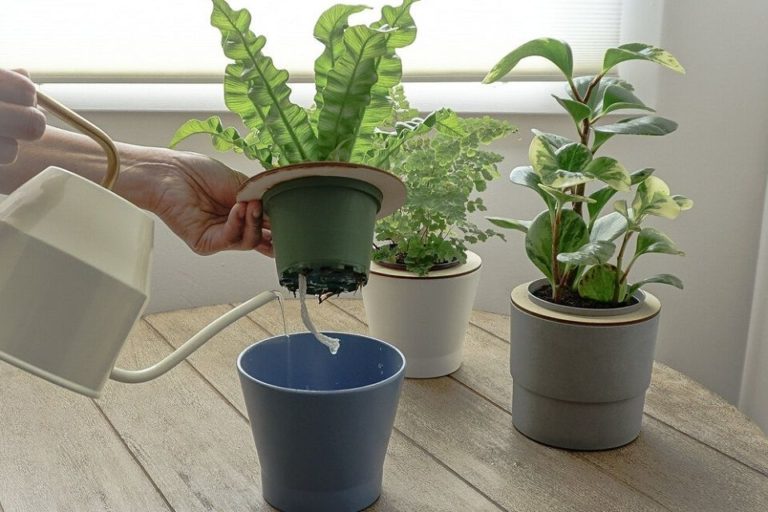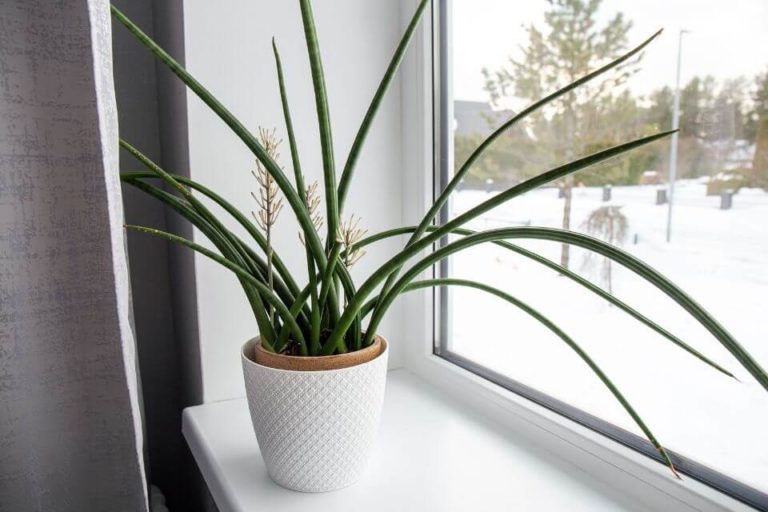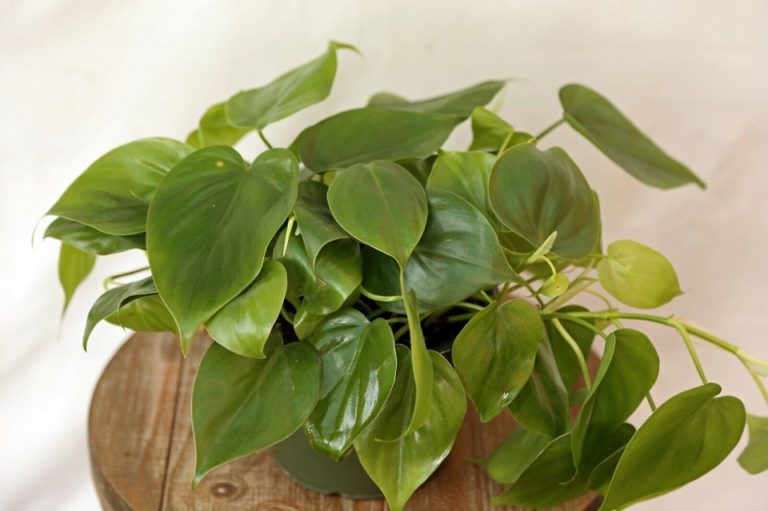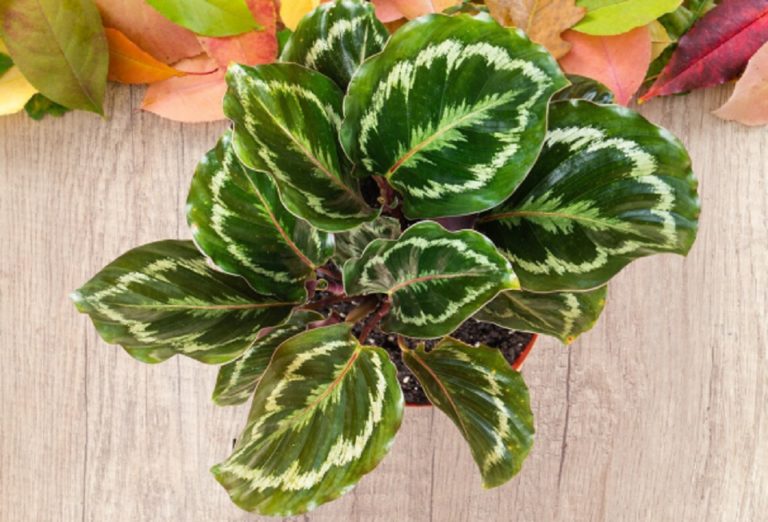Begonia Maculata Care: How To Propagate, Grow And Care

Begonia Maculata or Polka Dot Begonia is a beautiful house plant that enhances the beauty of your living space more pleasant.
There are thousands of plants available on the market, and choosing a good house plant might be challenging. If you’re having trouble picking the right plant, why don’t you try purchasing a unique plant something that no one has?
You may be wondering about the Begonia Maculata plant that is appealing to have in your living space. This guide will help you decide on which plant to purchase by giving you all the details of it.
Before purchasing this type of plant, it’s best to understand everything about it so you can understand how to care for Polka Dot Begonia properly.
TABLE OF CONTENTS
Begonia Maculata Wightii Overview
When you hear the name, Begonia Maculata Wightii or Polka Dot Begonia, several questions may be running through your head. Don’t worry. We’ll cover a lot in numbers, 3 through 5.
You’ll learn how to recognize this plant when you’re going shopping. You’ll also find out where you should place this Polka Dot Begonia and what it’s used for.
In addition to all of that information, you will also be given information about whether or not this type of plant can grow flowers.
Everything will be given in great detail so some of your unanswered questions will be answered here. If you have more questions, don’t stop reading here. There is more information to be given throughout the rest of the guide.
There are other names for this plant including Polka Dot Begonia and Spotted Begonia.
Appearance, Size, and Growth Rate
When you’re going shopping for this specific plant, you know what you’re looking for by recognizing the name. The name, Maculata, means that the plant is covered in spots.
When you have spotted the plants and you notice that more than one plant is spotted, look for the plants with the white spots. The Begonia Maculata plant will also have a purplish-reddish tint to the bottom.
Another feature of the appearance that will stand out among the rest of the plants is the leaves. Once you find it, you may think an angel has graced your presence by the way the leaves fall on the sides.
The appearance may attract you to Polka Dot Begonia and you may feel like it’s perfect to add to your home, but how big is it? The answer to this question will determine where you could put it in your home.
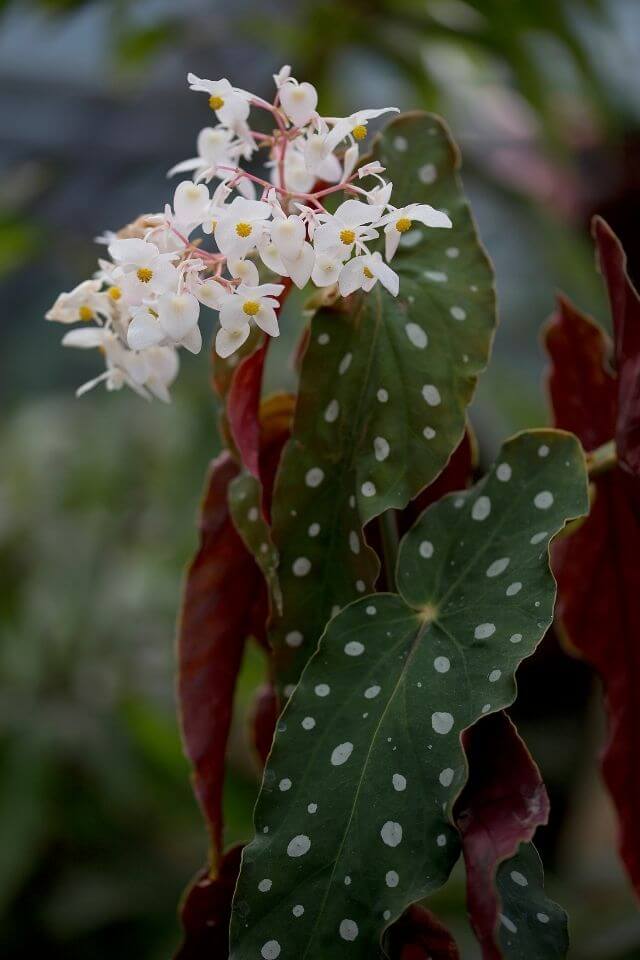
There are a couple of different sizes to choose from, such as a 2.5″ or a 4″. These sizes are how big they are when you first purchase it, but what about how big they can get once you add water?
The sizes may seem small to you, but these plants will get bigger. How big? That’s a great question and something you need to be well educated on before you find a placement for the Polka Dot Begonia plant in your house.
It can vary on how big this plant can get. Some grow up to 4 inches in width while others can grow to be up to 5 feet tall. If yours grows that tall, you will have to trim your leaves so your plant can be at a healthy level.
However, your plant may be dying when it gets to be that tall, and the leaves will fall off anyway. Another incident that could cause your plant to increase that tall in size is if it is not exposed to that much sunlight.
One thing that plants need is sunlight to survive. If they don’t have that, then they will die.
Begonia Maculata Uses and Placement
Below you will find some ideas about where to put these unique-looking plants to make sure you’re taking care of them the right way.
- Avoid putting the Polka Dot Begonia plant in a room where there is not any sunlight coming in from outside. When a Begonia Maulata plant is in a room without sunlight, it will continue to grow and will come close to dying.
- If you choose to place the plant outside, be sure to put it on a patio, under an awning, or anywhere where direct sunlight is exposed to it. If you put the plant in direct sunlight, the plants will grow to be too high and the leaves will start falling off indicating the plant is dying
- Find a happy medium when searching for a place to put your plant. You want to put it in an area where it will get sunlight but you can’t have too much of it or not any at all.
Let’s talk about what you will use them for. Below you will find some suggestions that come highly recommended to use the plant.
- The plant is light enough to where you can hang it outside to add some color to your patio or porch.
- You could also put it in plant holders on the floor either inside or outside.
- Another thing you could do is place it on a coffee table as a centerpiece or on your dining room table. If you directly place it on a table or counter of some sort, be sure it’s out of the way of children and pets.
- The Begonia Maculata plant would make a great household addition because it will add some color to your household, and it would be something unique that would be a crowd-pleaser.
Begonia Maculata Flowers
Yes, the plant looks neat, but do flowers bloom from it? If you want your plant to look even prettier with flowers blooming, you will need to fertilize your plant to make it bloom.
The flowers are beautiful, and they would make your home smell fresh and look updated. If you want your plant to start blooming flowers, it’s best to know when the flowers will start to bloom.
Flowers from a Begonia Maculata plant only bloom during the spring and winter seasons.
To make your plant produce flowers at a faster pace, be sure to move the placement of your plant to somewhere the lighting that’s a little bit brighter. Be sure not to put it in direct sunlight.
Begonia Maculata Care
In this section, we’ll talk about properly caring for your Begonia Maculata plant. We’ll go over everything from soil and watering requirements to fertilizing and pruning your plant. Everything in between will also be covered.
By the time you’re done reading this section, you will have enough information to know what to do to be sure your plant is living a long and healthy life.
Soil Requirement:
It is highly recommended that you purchase a palm soil mixture. When determining the soil requirement, it’s best to have a soil mixture that doesn’t make the soil too dense when it is splashed with water.
If you were to choose another mixture, you may have a hard time growing your plant to a healthy level, and it would make it hard for you to grow flowers.
It’s best to be sure the soil is moist so the Polka Dot Begonia plant will grow according to plan.
Watering Requirement:
Previously, we talked about keeping your soil moist. You should know the appropriate watering requirement so you don’t put too much water on your plant. Watering your plant depends on the weather.
During the summer months, it’s hot and dry so you’ll need to water your plant every 4 days. Be sure to get it on the soil and not the leaves. When the leaves are too wet, it could cause them to fall off, thus ending the life of your plant.
Since the winter months are a lot colder, you don’t need to water your plant as often. Once every one to two weeks should be enough.
Begonia Maculata Exposure and Light Requirements:
As previously mentioned be careful about the amount of light that shines on your plant. After dark, you should have some light on your plant.
Don’t put it directly under a lamp, but you can put the plant near a lamp so it is exposed to some light. If the plant is directly under heat waves from the sun or a lamp, your plant might dry out too quickly.
Temperature Requirements:
If you leave your plant indoors, be sure to keep your house between 67 to 70 degrees Fahrenheit.
During the winter or fall months, you should be able to leave your plant outside for a little bit. Just make sure the temperature doesn’t fall below 67 degrees.
Humidity Levels:
Begonia Maculata plants should be in a room that has at least a 20 percent humidity level but preferably higher than that. In the wintertime, it’s hard to get a high humidity level so use a humidifier to boost the levels of humidity.
Fertilizing Begonia Maculata: It’s best to fertilize the plant at least every couple of weeks or so to make sure your plant is still growing.
Pruning Begonia Maculata:
When you notice your leaves are getting too long, it’s best to prune them so the plant will keep growing at a healthy rate. When you prune your leaves, you’re allowing your plant to have a fuller appearance.
In addition to your plant having a fuller appearance, it will also look healthy.
Begonia Maculata Propagation
At some point, all plants must go through the steps of propagation so they can remain healthy and continue to grow to a reasonable height. If you don’t know what the steps are to propagate, just follow the steps below to get started.
- The first step is to know when to start the propagation of the Polka Dot Begonia plant. It’s best to start when the flowers will not be in bloom, which is during the winter months.
- Next, you should be sure that the leaves on your Begonia Maculata plant are full and are long enough to begin pruning.
- You will need to grab a tool that’s thick enough to start cutting. You may want to try using some shears.
- Do you have the shears? Great! Start pruning some of the leaves and you’re going to dip those stems that were on those leaves in some water. Set them aside.
- You may be able to tell where you cut in the plant. Use your photographic memory and remember those spots.
- Once a few weeks have gone by, you’ll notice that the roots have grown and you have just made your plant healthier by going through the propagation steps.
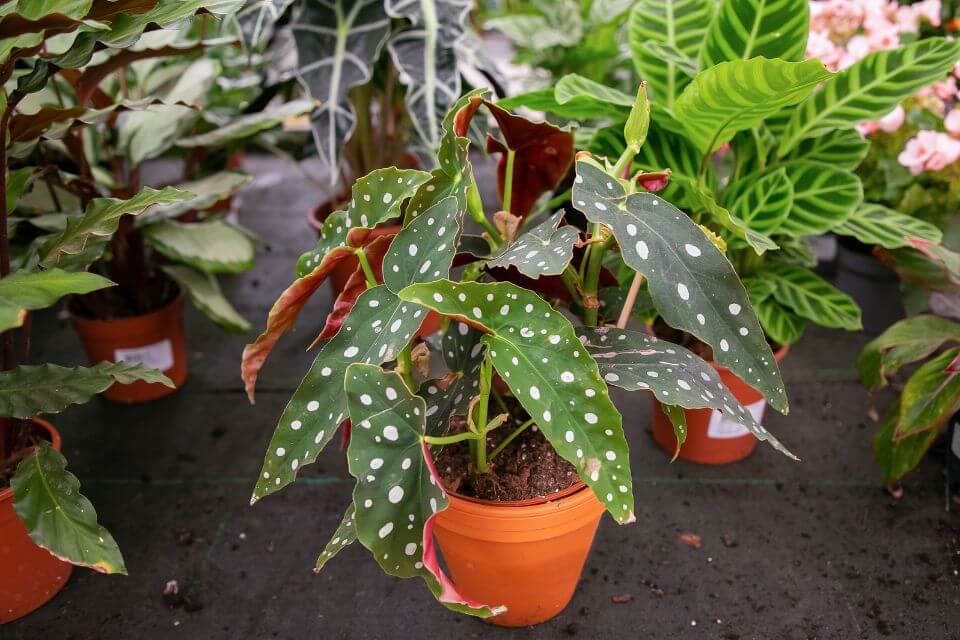
How to Re-Pot Begonia Maculata Plant
Have you ever been through a re-potting process? If you haven’t, you’re not alone. Most people don’t know what to do. Before we get into the steps to re-pot your Begonia Maculata plant, let’s go over the definition of re-potting.
If you’re going to re-pot a plant, you are transferring it to something else that’s either small or larger than your previous post was. It’s highly recommended that you re-pot your plant about every year.
Below you’ll find a list of steps that will help you understand how to re-pot your Begonia Maculata plant.
- You don’t want to put your Begonia Maculata plant in another pot that’s too big or too small from the original. It’s best to have a little room but not too much.
- Put some fresh soil in the new pot so it won’t become too dry.
- Grab the roots and gently lift the plant out of the soil and into the new pot with fresh soil.
- Once it’s in the soil in the fresh pot, then you can add a little bit of water. If there is already water in the new pot or on your plant, don’t add any more. Remember, you don’t want to keep the soil too moist because it won’t grow.
Begonia Maculata Common Problems and Prevention
There are a few problems you must keep an eye out for so you don’t run into any difficulties.
If you’re not sure what to do if you come across any of these concerns, then we’ll go over ways to prevent them so you don’t have to worry about running into these problems. Let’s get started.
Mealybugs:
Your leaves on your Begonia Maculata plant have juices in them. While you can’t see the juices, mealybugs can. Mealybugs thrive on these juices and you may see a bug on your leaf or on top of the soil in your plant.
They will be covered with a sticky substance and you will have to get rid of them. There are two things you could use. You can either try both of them or one or the other.
Horticultural oil and insecticidal soap work wonder to get rid of these bugs who are sucking your plant nutrients away. To prevent this problem, you can wipe your leaves daily with a type of oil called neem oil.
Begonia Maculata Leaves Curling:
This happens after a root rot occurs, which we’ll go over in a little bit. The leaves will start to curl, and the plant will slowly die. To prevent this from happening, it’s simple.
Measure between one and two inches, and let the soil dry out. This method will avoid your leaves from curling and will also give you some information in case it happens again.
Begonia Maculata Brown Spots and Tips:
If you have been gone all day and you come home to find that your leaves from your Begonia Maculata are turning brown, then it usually means it was in direct sunlight all day or it could also happen if you haven’t given your plant enough water.
It could also mean that you have placed your plant in an area that has low humidity. To prevent this from happening, be sure to water your plant as directed and be sure that you’re not putting the plant in direct sunlight.
You should also keep track of your humidity levels and make sure your plant is receiving high humidity levels.
Root Rot:
We briefly touched on this earlier. If your roots are rotting, then you are giving your plant too much water. Remember, these aren’t ordinary plants that you water every day. Be sure to water them as is recommended.
You can easily determine if your roots are rotting. Your pretty green leaves will turn yellow. Your stems may be starting to wilt and smell. Also, they may not be growing as much as they should be, and the stems could be mushy.
Frequently Asked Questions
We’re coming close to the end but you may still have questions. There are a few questions that have been frequently asked, and those will be answered below.
Is Begonia Maculata Hard to Care For?
Good news! If you have never owned a plant in your life, you can take care of this one because it’s easy. You don’t have to water Polka Dot Begonia every day and you have to make sure it doesn’t hit direct sunlight, and your plant will grow.
Not only will it grow, but it will also bloom flowers during the spring and winter months.
Why Is My Begonia Maculata Dropping Leaves?
If your leaves are falling off your plant, that must mean that you missed a step somewhere. You may have accidentally put your plant in direct sunlight or given it too much water.
Remember, the humidity levels must be between 20-50 percent at least. If the humidity level is below 20 percent, then you must boost it up to help your plant stay alive.
Does Begonia Maculata Flower?
Yes. As long as you take excellent care of your plant, you’ll notice flowers will start to bloom around the spring and winter months.
Is Begonia Maculata Rear?
No. Polka Dot Begonia used to be one of the rarest types of plants but now there is an increasing demand for it, which is causing the Polka Dot Begonia plant to become more popular now than ever before.
Is Begonia Maculata an Indoor Plant?
Polka Dot Begonia can be an indoor or outdoor plant. Most people put their Begonia Maculata plants indoors to keep them out of direct sunlight. If you have a shaded area where you can put the Polka Dot Begonia plant outdoors then that’s great as well.
Plus, the humidity is higher outside than it would be in your home.
Is Begonia Maculata Toxic To Cats and Dogs?
Yes. This is one of the plants that are toxic to cats and dogs among many house plants.
If you have purchased a Polka Dot Begonia plant and you have pets, your best bet would be to put it up in a spot where you know your dogs and cats will not touch the plants.
Can I Grow Begonia Maculata Under Grow Lights?
Yes. If you keep your plant inside and you don’t have much sunlight coming through, you can use any type of artificial light. That way you can gain that heat and light exposure.
Where Can I Buy a Begonia Maculata Plant?
They are sold just about everywhere. You can find them in home improvement stores, in superstores, and online.
Final Thoughts
Now that we have come to an end, you may be feeling a little overwhelmed with all of the information in this guide. Read about the Begonia Maculata plants a few times, and then take one step at a time.
You will love the simplicity of the plant. Even if you have a busy lifestyle, you can take care of your plant. Remember, to follow all the steps and look over the prevention tips. You’ll do a great job, and it will look great.

